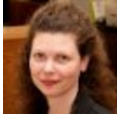This white knight mythology is perhaps best personified by James Angleton who oversaw a CIA assassination unit and rationalized his actions with an obsessive belief that we were "engaged in a battle of light against darkness."
Moreover, to this way of thinking, a negotiated end to the Cold War represented surrender and any advocate of such was a traitor.
The Assassination and Cover-up
I won't go into the labyrinthine story of Lee Harvey Oswald but other evidence very strongly suggests that Oswald could not have fired the fatal shot that blew out the back of Kennedy's skull, which was the exit route of a bullet that entered through Kennedy's throat.
The two most persuasive items indicating that Oswald was not the lone shooter (if a shooter at all) and the implementation of a cover-up are the issues surrounding the glaring lack of security for the president on that fateful day and the autopsy. What follows is a quick and dirty summation of the most interesting points for this part of the book.
Lack of Security
In 1961, Kennedy hired the first African-American Secret Service Agent, Abraham Bolden. Bolden quickly became aware of the dislike and outright hostility that other Agents harbored toward Kennedy, including churlish comments that they would "get out of the way" if he were shot at. They also made it clear that they resented Kennedy bringing a "n-word" into their circle. Bolden began to wonder if the Secret Service could be trusted to carry out its duties to the president. When he received no satisfaction after reporting the issue to his superiors, he voluntarily returned to the Chicago branch office.
On the day of the assassination, other agents admitted that Emory Roberts, the Special Agent in Charge of the follow-up car, ordered them to stand down after Kennedy had been hit with the first shot. One agent, Clint Hill, defied the order and can be seen racing to the trunk of Kennedy's limo though it is too late to help him.
This leads to a plethora of questions: 1) why were the agents riding in the car behind the president where they would be able to provide no cover for him, 2) why were there no motorcycle escorts beside the president's limo as was normal, 3) why was a dogleg turn forcing the open vehicle to slow well below mandated speed in an area where there were a multitude of hiding places for a potential assassin approved -- especially, when an assassination plan with similar features was thwarted by the FBI in Chicago three weeks before, and 4) why were the Dallas Police Department and the local County Sheriff virtually missing in action in terms of providing security?
The answer is that the Secret Service was involved in all of these decisions. Dallas Police Chief Jesse Curry ordered his officers to terminate their supervision of Kennedy's motorcade and the crowd one block short of the assassination site. Years later, Curry explained that "The Dallas Police Department carefully carried out the security plans which were laid out by Mr. [Winston G.] Lawson, the Secret Service representative from Washington, DC."
Furthermore, witnesses on the grassy knoll area reportedly saw several men who flashed what appeared to be Secret Service badges but did not act in a way that would be expected of such agents -- for example, they did not run to assist the president after the shooting or cordon off a crime scene or take statements from potential witnesses. Instead, they took any photographic or recorded evidence the witnesses may have had and then ran them off the area.
One of these witnesses was a Dallas police officer, Joe Marshall Smith, who reported smelling gunpowder in the area right after the shooting but was rebuffed by a man showing Secret Service credentials. Smith learned later that there were no Secret Service agents stationed there and the men flashing such credentials were imposters.
A CIA memorandum released in 1973 stated that its Technical Services Division had furnished the Secret Service with security documents over the years, despite the fact that the Secret Service is part of the Treasury Department.
The Autopsy
Doctor Charles Crenshaw was one of the first doctors in the Trauma Room of Parkland Hospital and confirmed that he saw a bullet entry wound in the president's throat. He also confirmed that the right rear of the president's brain was gone, which was also consistent with an entry wound from the front.
These facts were confirmed by 21 of the 22 medical staff present at Parkland that day, based on their original statements. Many of the medical staff, however, either retracted their statements or did not press official contradictions to what they witnessed due to fear and intimidation. One of the other doctors present that day, Malcolm Perry, changed his statement after being threatened by Secret Service agents. One of those agents, Elmer Moore, admitted years later that "he had been ordered to tell Dr. Perry to change his testimony [acting] on orders from Washington and Mr. Kelly of the Secret Service headquarters."
Next Page 1 | 2 | 3 | 4 | 5 | 6
(Note: You can view every article as one long page if you sign up as an Advocate Member, or higher).





